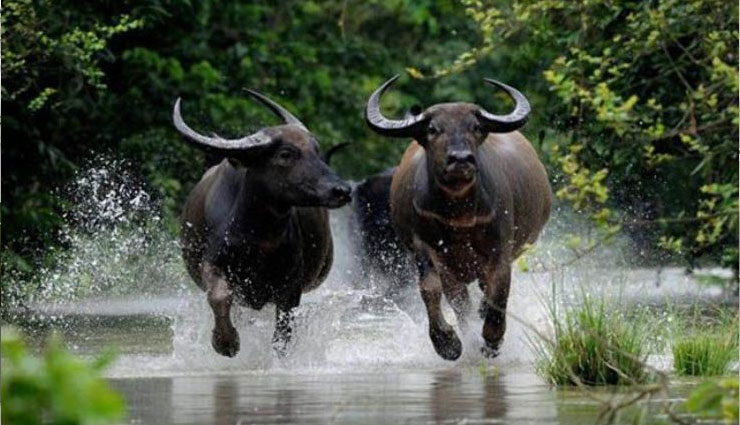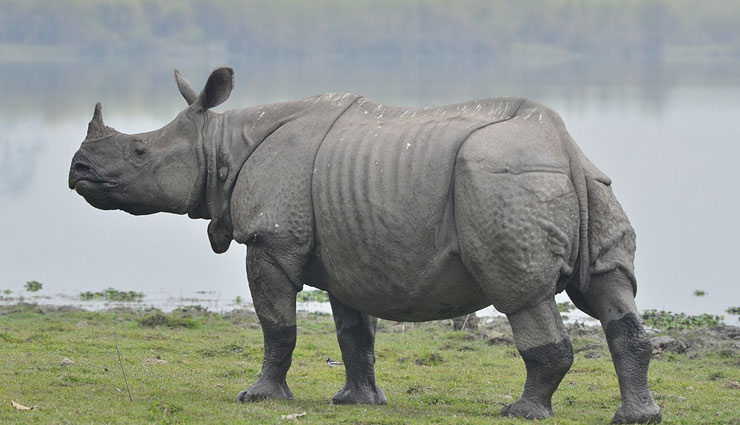
The Park has high species diversity in the terai duar savanna and grasslands with vast stretch of tall elephant grass and marshland. One horned rhinoceros, royal Bengal tiger, Asian elephant, wild water buffalo and Indian bison are collectively known as Big Five of Kaziranga National Park.

One Horned Rhinoceros is native to the Indian subcontinent, restricted to Terai grasslands and riverine forest along the Brahmaputra river basins in Assam. The total population of Indian Rhino was estimated to be 2,575 individuals and Kaziranga National Park is home to 2,048 great Indian rhinoceros.
Great Indian Elephant is the largest land mammal in India, native to mainland Asia. The Himalaya foothills,plains of Assam and Western Ghats of India house highest populations of Indian elephant, 31,368 wild Indian Elephant found in India.
Royal Bengal Tiger is the national animal of India,estimated that 2,226 individuals Bengal tigers living in India. Kaziranga National Park has one of the highest density of Bengal Tigers in the world.
Indian Bison or Gaur is the tallest of wild cattle species, native to the Indian Subcontinent. The Gaur are also among the largest living land animals, occurred throughout mainland India,The Western Ghats host estimated 22,000 population of Gaur in India.
Wild Water Buffalo is a bovine native to the Indian Subcontinent, estimated 3,400 individuals left in the wild forest. The wild water buffalo mostly restricted to in and around Kaziranga National Park of Assam, The park has largest population of the Wild water buffalo in the world.